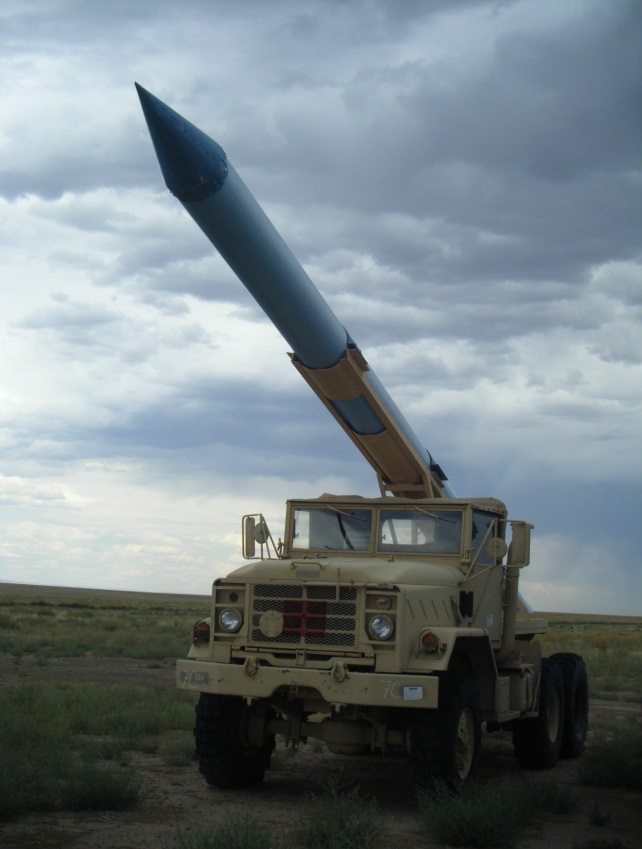 Photo via The United States Air Force
Photo via The United States Air Force
The Future of the INF after the 2018 Nuclear Posture Review
In December 1987, the United States and the Soviet Union signed the Intermediate-Range Nuclear Forces Treaty (INF), eliminating mid-range ground-launched ballistic and cruise missiles. After the collapse of the Soviet Union, six former Soviet Nations agreed to fulfill the Soviet Union’s obligations under the INF, including Russia.
The U.S. determined that Russia was in violation of the INF Treaty in 2013, but it was not until 2017 that the claims were substantiated. When Russia was in the process of developing a ground-based intermediate-range ballistic missile in 2014, the U.S. stated that developing and possessing a mid-range missile would be a violation of the INF treaty by Russia. In the report, by the Department of State, Paragraph 1 of Article IV was highlighted, stating that “the Parties shall not possess intermediate-range missiles and launchers of such missiles…[and] no Party shall produce or flight-test any intermediate-range missiles or produce any stages or launchers of such missiles.” While it is possible for Russia to return to compliance with the INF Treaty, Russia’s Foreign Ministry has continuously rejected the claims that Russia violated it and has argued there is U.S. weaponry that should also fall under the treaty.
Though the United States has denied these allegations in the past, the U.S. has recently approved research and development (R&D) that could potentially threaten the future viability of the INF Treaty. In the 2018 Nuclear Posture Review, the Department of Defense outlined measures to commence “INF Treaty-compliant research and development by reviewing military concepts and options for conventional, ground-launched, intermediate-range missile systems.” Earlier this month, a House Bill authorized the United States to start R&D on such missiles. As stated in the National Defense Authorization Act for FY2018, the “Secretary of Defense shall establish a program of record to develop a conventional road-mobile ground-launched cruise missile system with a range of between 500 to 5,500 kilometers.” By approving the development of these missiles, the United States is getting very close to doing exactly what it argued Russia did and violating the treaty itself.
This response risks the total collapse of all provisions of the treaty. While Russia is in violation, the U.S. should be focusing on alternative options to bring Russia back into compliance. While the U.S. is constrained by the treaty from deploying ground-based cruise missiles, its European NATO partners are not. At the time of the signing of the INF Treaty, only the Soviet Union, US, and France possessed intermediate-range nuclear missiles, and since the signing of the treaty, other nations have not felt threatened enough build them for their own arsenals. In the late 1990s to the early 2000s, all eastern European countries, including Germany, went as far as destroy their INF banned missiles despite not being parties to the treaty, as there was no direct need to maintain them.
In considering the United States’ potential response, the European Union and European NATO countries should be consulted on how to respond to Russia’s violations and the potential full collapse of the INF Treaty. Russia’s violation provides encouragement for these countries to incorporate more ground-based cruise missiles into their own arsenals. If the United States decides to act in good faith and remain in the treaty, Europeans may opt for a more direct response to Russia’s violations. With Russia deploying weaponry that violates the INF Treaty, the EU may be forced to capitalize on the recent decisions of the European Commission that allow for financing R&D of defense projects if they are European in nature, rather than nationally specific. Russia developing a ground-based intermediate-range ballistic missile would be a European threat in nature rather than a potential threat to individual countries.
The United States should be advocating for the INF Treaty to remain in place. It would be in the interest of the U.S. to formally bring other European countries into the treaty, especially as a carrot to Russia and contingent on its full compliance. However, if Russia continues to remain in violation, the United States should work with allies within Europe to develop a strategy that answers a growing Russian arsenal of ground-based intermediate range missiles. But a U.S. decision to independently develop these weapons “just in case” they are needed exacerbates the situation and may lead to an avoidable arms race.





